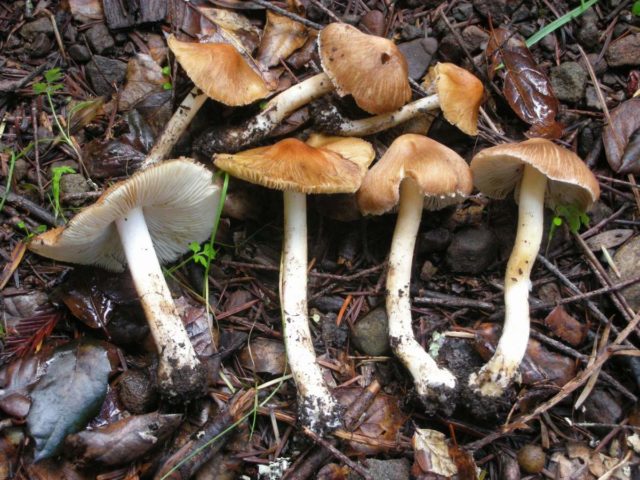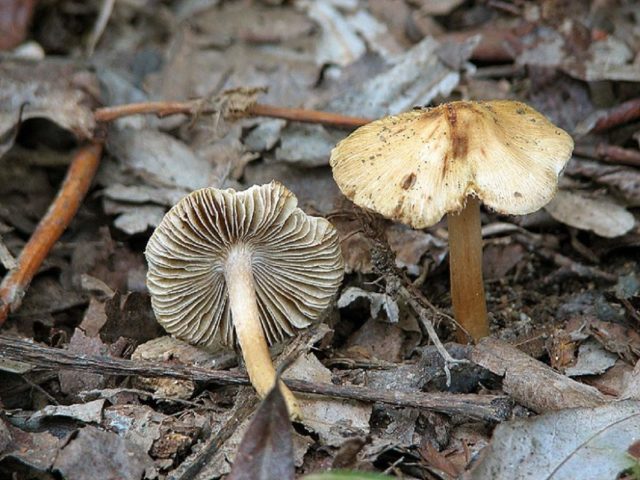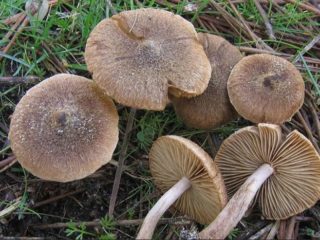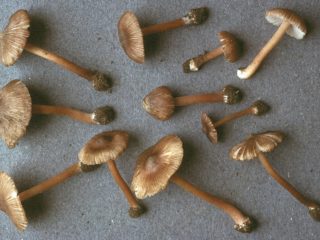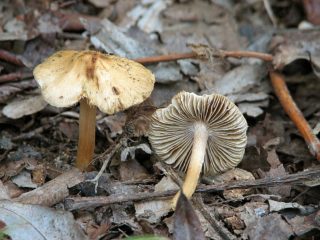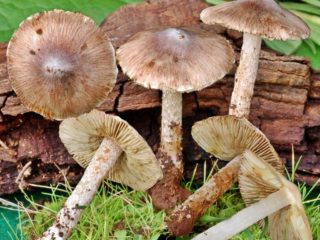Content
There are about 150 varieties of mushrooms of the Volokonnitsa family, of which about 100 species can be found in the forests of our country. This includes fissured fibre, which is also called conical or fibrous fibre.
What does fissured fiber look like?
This species is a small plastic mushroom with the following characteristics:
- The cap changes shape depending on the age of the specimen. Thus, in a young fissured fibre, the cap is pointed-conical with the edges turned inward, then it becomes almost prostrate with a sharp tubercle in the center.The old mushroom is revealed by its brittle and heavily cracked edges. The size of the cap in diameter varies from 3 to 7 cm. The surface is pleasant and smooth to the touch in dry weather, but becomes slippery during heavy rains. The color is yellow-golden or brown with a darker spot in the center.
- On the inside of the cap there are frequent plates fused to the stem. Their color changes depending on age. So, in young specimens they are white-yellowish, and in adults they are greenish-brown.
- The spores are ellipsoid, dirty yellowish in color.
- Fissured fiber has a straight, thin and smooth stalk, the length of which varies from 4 to 11 cm, and the width is no more than 1 cm. In young fruiting bodies it is pure white, and with age it acquires a yellowish tint.
- The pulp is white, thin and fragile. It gives off an unpleasant aroma.
Where does fissured fiber grow?
These representatives of the genus Volokonnitsa prefer deciduous, mixed and coniferous forests and form mycorrhizae with hard trees. Quite often the mushroom is found in parks, clearings, along forest paths and roads. Widely distributed in Russia, North Africa, South and North America. One of the main conditions for their development is fertilized soil. The optimal time for fruiting is summer and autumn. As a rule, they grow in small groups, very rarely found alone.
Is it possible to eat fissured fibre?
Fissured fiber belongs to the category of poisonous mushrooms. It contains the potent poison muscarine, which is very dangerous to human health and life.
Symptoms of poisoning
It is prohibited to consume this specimen as food, since the mushroom is poisonous and can cause severe stomach poisoning. If this does happen, a person may feel the first symptoms after 2 hours, namely:
- increased sweating;
- diarrhea and vomiting;
- blurred vision;
- weakening of heart rate.
In the absence of emergency measures, a person will experience breathing problems and pulmonary edema, which will subsequently lead to death.
First aid for poisoning
After consuming fissured fiber, it is necessary to eliminate the poison from the body as quickly as possible and reduce its concentration in the blood. To do this, you should carry out a procedure that consists of taking adsorbents and gastric lavage. When first aid is provided, the victim must be immediately taken to the hospital, where he will receive a full course of treatment.
Conclusion
Fissured fiber is a poisonous mushroom, the consequences of consumption can be disastrous. Therefore, when collecting forest gifts, it is important for the mushroom picker to keep track of what he puts in his basket. It is important to remember that even contact with edible mushrooms can cause poisoning in humans.

